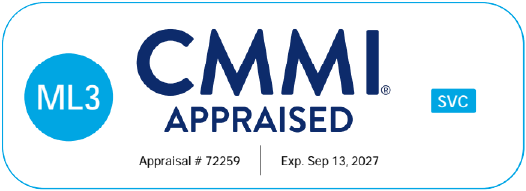May 15, 2019
Authored by Brian Thomas, Solution Architect, David Shilkret, K2 Master and William F. Nagle, Director, Enterprise Sales

The following is our comprehensive response to a K2 prospect who asked the question:
“How long does it take a technical staff member to become an experienced K2 developer?”
For a “technical staff member” we presume that person has the following skill-sets that are considered prerequisites for K2 Mastery:
- 5+ years of enterprise architecture experience
- Exceptional communication and time management abilities
- Experience in leading technical members and working with project management
Please note that the formal K2 Master Badge, an elite certification from K2, also requires several certifications and at least 2 reference deployments of K2-based solutions.
Additionally, since the answer to the aforementioned question is highly dependent on how “experienced” is defined, consider these turnaround guidelines to achieve the following levels of capability:
| Capability Level | Turnaround |
| I understand K2 | 3 days |
| I can develop K2 solutions | 3+ months |
| I am experienced and have deployed K2 solutions | 3 quarters of full-time K2 work |
| I am a K2 Master candidate | 3-5 years |
The timelines for these experience levels were calculated based on our suggested path to K2 mastery. What follows is our response to the next question most people will ask:
“What is the suggested path to become an experienced K2 developer?”
Step #1
First, take the online K2 Five: Core or K2 Cloud: Core training class. These online courses are self-paced and should take a week or less. These courses will give aspiring K2 developers familiarity with the K2 platform including vocabulary, design tools and capabilities. It is not a basic introduction.
Step #2
Second, complete the tutorials referenced in the online training class and a few more available online for free in the user guide. Dedicate 2 weeks for this effort. These tutorials are effective, detailed and free. Note that students will need access to a K2 Cloud instance or a K2 Five server to complete these tutorials.
Step #3
Third, start creating in-house applications. This should not include the flagship application that your return on investment (ROI) will be measured against. Estimate a minimum of 2 months to complete your first application. This step assumes your infrastructure is in place with the K2 installation validated, including integration points with SharePoint (optional) and SQL (recommended). Other integrations would normally be implemented during first project delivery. If using SmartBox, no additional integrations are needed.
Step #4
Forth, after a few weeks of the above instruction, our experience indicates that a one-week class given by K2 or a class, customized for your needs, by Discover Technologies, gets new K2 developers prepared for development. This formal class will fill in knowledge gaps and reinforce key points. Note that this step is not recommended first, as most students are overwhelmed if they have no prior exposure to the K2 platform.
Step #5
Fifth, and highly recommended for enterprise level deployments – mentoring services. This involves embedding an accomplished/experienced K2 developer with access to K2 Master resources for a few months with company developers to answer questions as they arise and provide solutions to current pain points.
Technical staff members can get through steps #1-3 in about two months. This will make them an entry-level K2 developer, but not an experienced developer. Step #4 is highly recommended and #5 is a backup if you do not have senior K2 staff or challenging pain points. Note that the K2 developer path is not limited to current technical staff, however, development concepts that apply in other forms of development apply to K2 development, but without the need to know how to code in a traditional language. Therefore, the learning curve is higher for staff that are new to application development. Conversely, the learning curve is lower for technical staff with the following skillsets:
- RDBMS Experience (MS SQL, Oracle, MySQL, etc.)
- Understanding of browser events
- Some understanding of Object-Oriented Design (It is not necessary to be a strong coder, so much as understanding the core concepts)
If you intend to deploy an enterprise-level application as one of the first deliverables, you will want one or two experienced K2 consultants to work alongside your in-house team to ensure success. After delivering the flagship application to production, your internal staff will then have the specialized skills to be considered experienced K2 developers.
About the Authors:
Brian Thomas is a Solution Architect and K2 certified practitioner with Discover Technologies. He brings 20+ years of hands-on industry experience from Industrial to Government sectors and 9 years of experience delivering K2 solutions from the management and developer perspectives.
David Shilkret is a Principal Architect and K2 Master with Discover Technologies. He has more than 15 years of experience working for employers including Alta Vista, UPS Logistics Technologies and K2. His areas of concentration include BPA, RPA and web application development.
William F. Nagle is the Director of Enterprise Sales at Discover Technologies. He brings with him 24 years of experience in the enterprise software industry. William’s knowledge in creating and delivering process automation and content management solutions is based on over 16 years’ experience in the business process management (BPM) industry and 8 years’ experience with product development at Microsoft. Currently, his efforts are focused on enabling business solutions built on the leading Digital Process Automation (DPA) and Robotic Process Automation (RPA) platforms in the industry.


